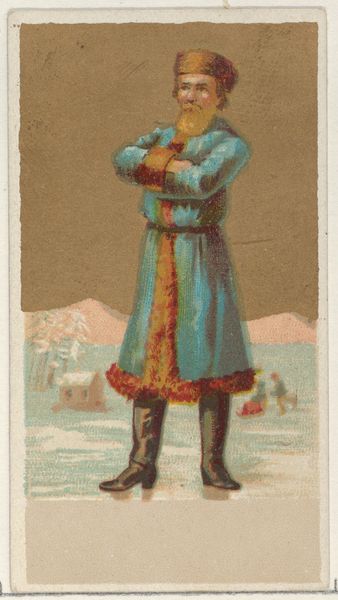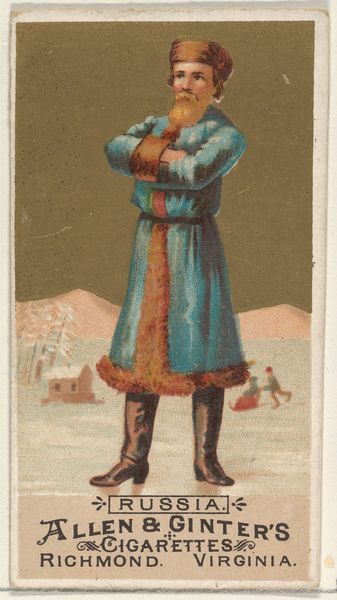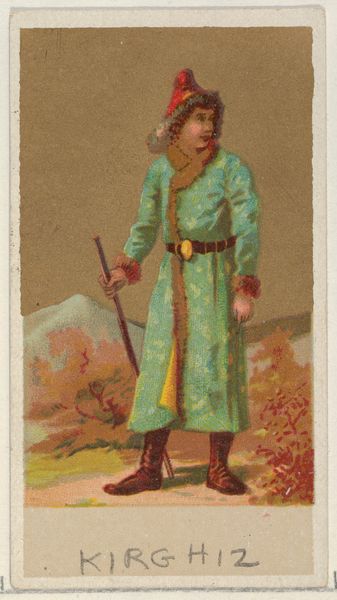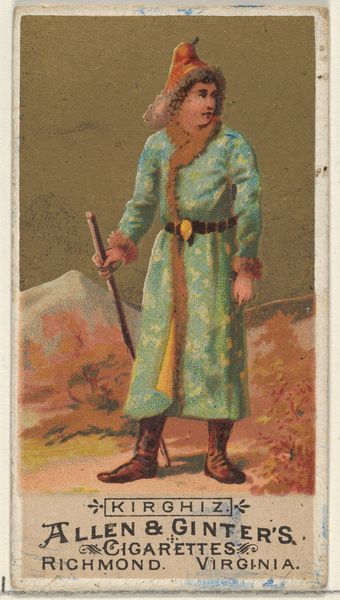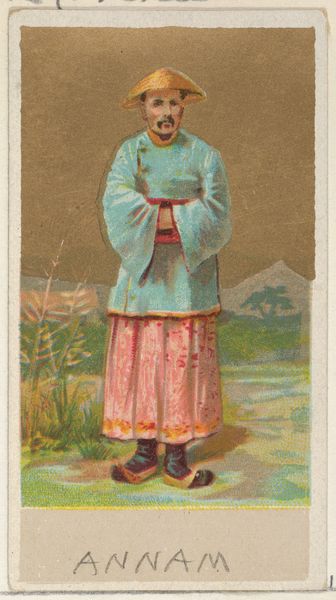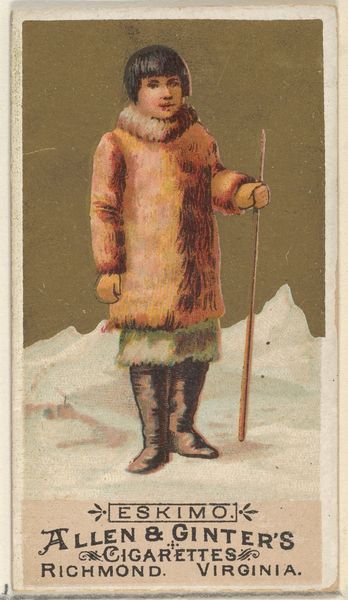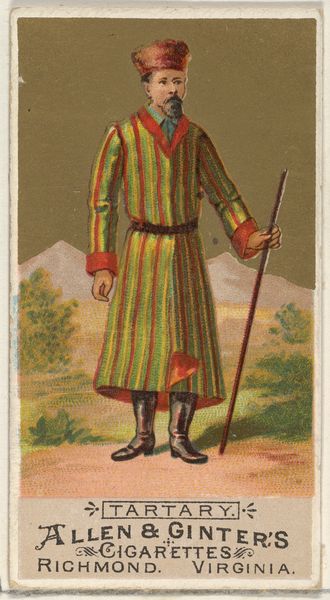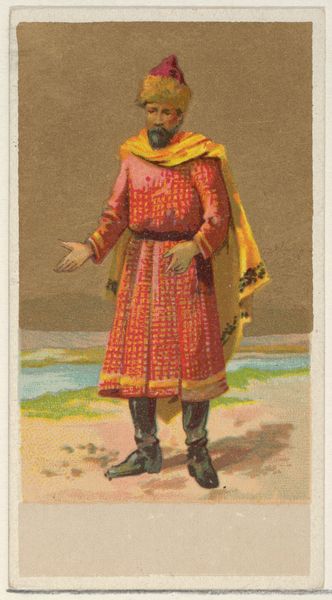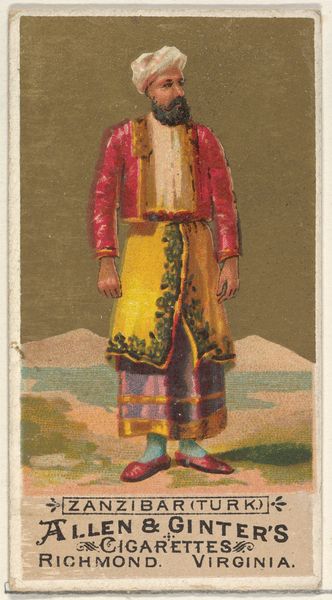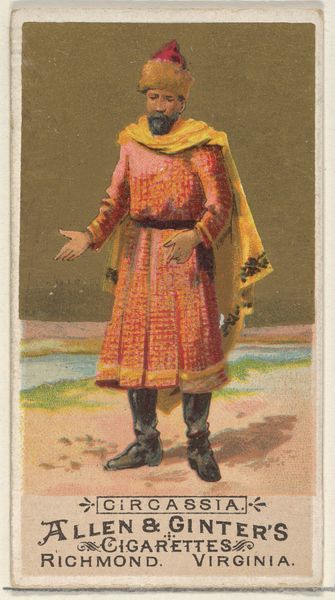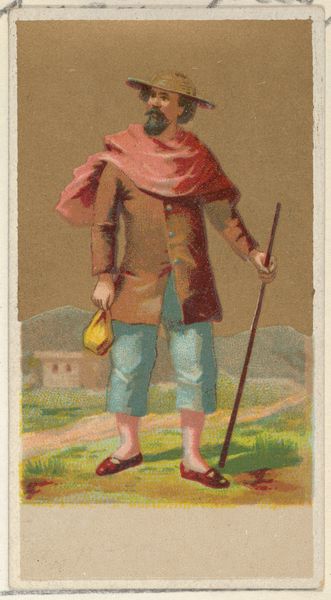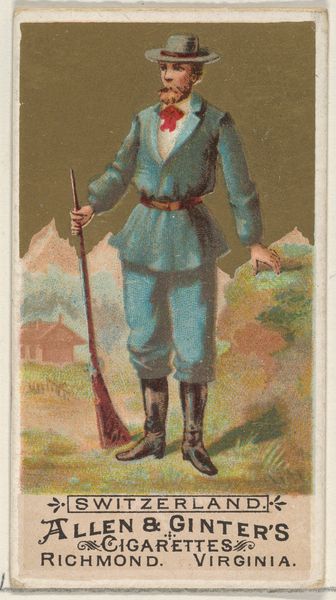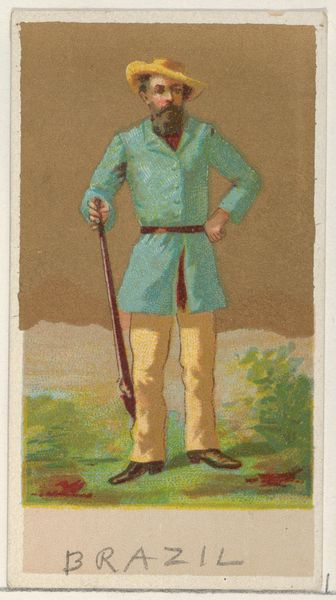
Lapland, from the Natives in Costume series (N16), Teofani Issue, for Allen & Ginter Cigarettes Brands 1886 - 1900
0:00
0:00
drawing, print, watercolor
#
portrait
#
drawing
# print
#
watercolor
#
men
#
portrait drawing
#
watercolour illustration
#
portrait art
#
watercolor
Dimensions: Sheet: 2 3/4 x 1 1/2 in. (7 x 3.8 cm)
Copyright: Public Domain
Curator: What strikes me first is the overall warmth conveyed by the artist’s use of color in depicting a very cold region. The browns and oranges give it a distinctly different feel. Editor: That’s fascinating. We're looking at "Lapland, from the Natives in Costume series (N16), Teofani Issue, for Allen & Ginter Cigarettes Brands," dating roughly from 1886 to 1900. It's currently housed at the Metropolitan Museum of Art. What interests me is the construction of this image. We have a lone figure front and center. This form, typical for a portrait, creates immediate engagement with the viewer, inviting a reading of power. Curator: Exactly, but within the wider context of these trading cards, consider that this isn’t just a portrait; it's a cultural signifier commodified. This image exoticizes the Indigenous person, placing him in a framework of European consumerism. It raises important questions about representation and cultural appropriation, don’t you think? Editor: Of course. Though on purely formal lines, I can read a lot of artistic interpretation. Observe how the brushstrokes blend, giving it a vibrant fluidity, a certain dreamlike quality that removes it somewhat from realism. It allows a very interesting play between image and perception. Curator: And while the blending does provide a softness, there is the issue of how a potentially inaccurate picture solidifies cultural perceptions. Does that fluidity then risk perpetuating stereotypes, distilling complex cultures down to easily digestible, yet shallow representations? It begs consideration. Editor: It does. I hadn't thought of that before. Thanks to our different approaches, this close consideration has revealed so much more than what meets the eye. Curator: And by understanding the artwork's purpose – an advertising insert – and examining its stylistic choices, we begin to realize its lasting effects in the visual lexicon. Editor: Well, this was indeed very insightful, it makes me think about these trade cards and how it can reflect an artist’s technique, or conversely the reproduction and marketing machine.
Comments
No comments
Be the first to comment and join the conversation on the ultimate creative platform.

